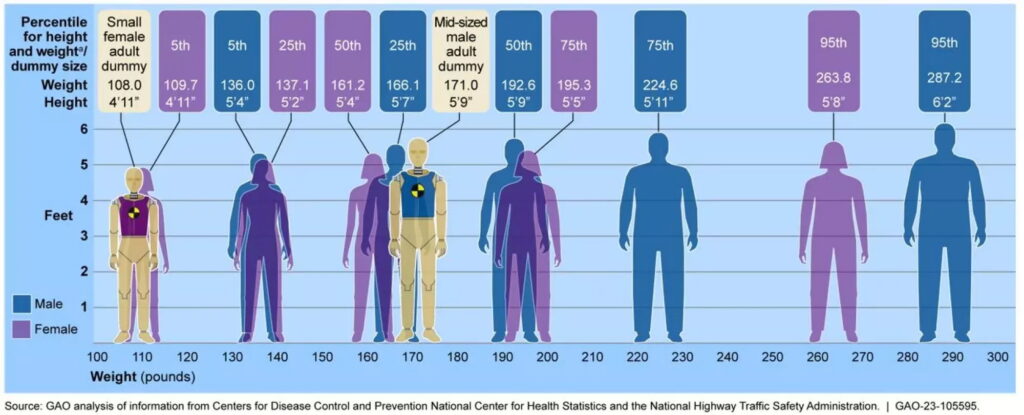For more than two decades, the National Highway Traffic Safety Administration (NHTSA) has known that women and older drivers face a greater risk of injury and death in automobile accidents, but has not done enough to address that disparity.
That’s the result of a new study from the Government Accountability Office (GAO), which looked into how the federal automotive safety regulator rates the crash worthiness of new vehicles. NHTSA should, therefore, introduce crash test dummies that represent a broader variety of population groups.
“Some characteristics of dummies currently used for NHTSA‘s crash tests may limit the extent to which the information the dummies provide helps mitigate greater risks faced by certain demographic groups,” the GAO wrote. “For example, currently used dummies represent a limited range of body sizes, do not reflect some physiological differences between males and females, and do not have sensors to collect data in the lower legs.”
Read: Most Midsize SUVs Fall Short In IIHS’s Rear Seat Crash Tests Placing Adults And Kids At Risk

The office also found that the limited ways in which the dummies are used could reduce their effectiveness as a research tool. The Insurance Institute for Highway Safety (IIHS), a private body that conducts its own crash tests, has started putting smaller dummies in the rear seats of certain vehicles to ascertain how well protected younger occupants are.
The organization found that, in a group of 13 vehicles that had earned its highest possible rating in a frontal crash test, just four could hold onto that rating after the rear-seat occupant was taken into account. That, it said, pointed to an alarming trend of rear seat passengers getting less protection than those in the front seat.
In its testing, the IIHS said that passengers in the back of a vehicle are still safer than they were years ago, it’s just that innovations haven’t kept pace with those for front seat occupants. Similarly, the GAO acknowledges that NHTSA’s crash testing has done much to make vehicle occupants safer, but says that more can now be done.
The introduction of new safety tests has never been a more pressing issue, because despite advances in vehicle design, on-road fatalities are on the rise. Data collected by NHTSA found that 43,000 people died on America’s roads in 2021 alone, and that number is expected to be just as high in 2022. As a result, the GAO recommends that NHTSA develop new crash dummies to help protect a larger portion of the population.





